

|
Back to |
| The Front Page |
| News & Features |

|
Sarasota fulfills its promise as national model for the public club by Bob Alman Images by a host of talented and inspired SCCC club photographers posted April 7, 2017
|
||||
|
||||
The club already had one of the biggest memberships in the USCA, with 200 members managing to play on three lawns. Three times it has been the USCA's "club of the year." Now, with six full lawns, it could surpass the National Croquet Center within a few years. The "founding generation" of board members who made the current expansion possible with a brilliantly successful campaign that enlisted the county's considerable help and support for the current expansion, including Jackie and Fred Jones, have not retired. They are welcoming and mentoring a new, youthful, and ambitious president and several new board members in planning further improvements. Among the forecast new amenities are a bigger clubhouse and night lighting to support structured evening programs for nine-to-fivers.
Let's begin with the end of the story--the drone shots of the newly expanded facility in play. The first one is a view from the south side, showing the three old courts, with the newly developed playing space just barely visible in the background, beyond the central shelter that divides the new from the old. The club lies along the western edge of Wellfield park, which hosts all the popular public sports.
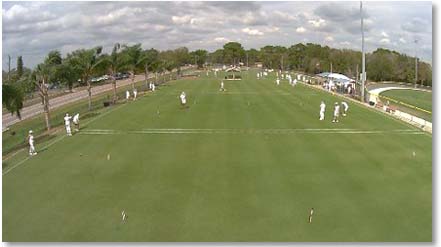
|
The next aerial view shows the new playing surface on the left. It can be configured as three full size lawns, or courts of smaller dimension sized in accordance with players' handicaps. The small clubhouse and equipment shed and shelter are clustered at the top of this photo.
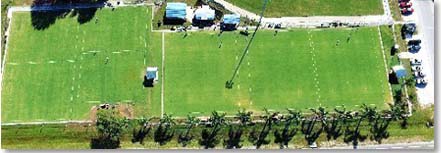
|
Now, having previewed the ending, let's examine how it all happened: Exactly as it should, by letting the County Commission know exactly how much the Sarasota Club has contributed to the life of the community in a major park, demonstrating their "voter power" with substantial representation at critical Commission meetings, and agreeing to do as much of the work onsite as county policy allowed.

|
Outgoing president Bob Lentz made the final pitch to the Council, who could hardly refuse such powerful arguments backed by an army of seated mostly elderly voters in white. The Council's YES vote was unanimous.
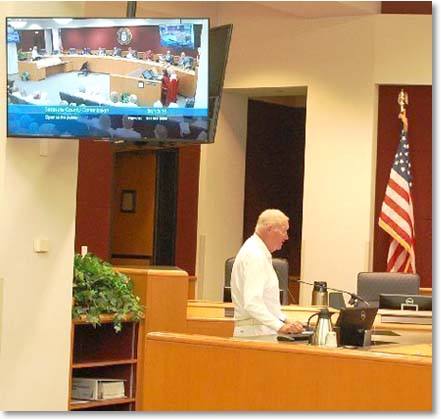
|
Afterwards, outside the Commission chambers, the SCCC "lobby" gives a "thumbs-up" signal to club photographer Nancy Hart. Which meant that now, the real work has to begin.
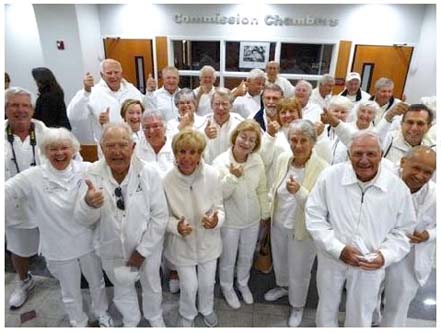
|
The tropics are said to begin somewhere in South Florida, and since there's plenty of rain, there's also tropical jungle to be cleared--even in a public park--if you want to put in a croquet lawn. A lot of that work can be done by club volunteers.
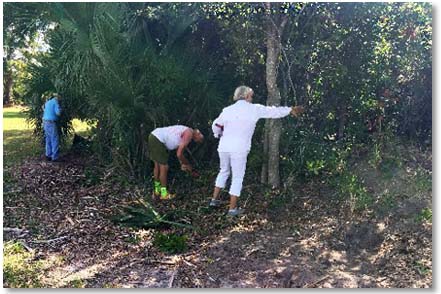
|

|
After clearing the jungle, such pesky matters as irrigation and drainage have to be considered and engineered into the sub-surface, before the laborious task of laser leveling begins with the heavy machinery needed to produce an absolutely flat lawn.
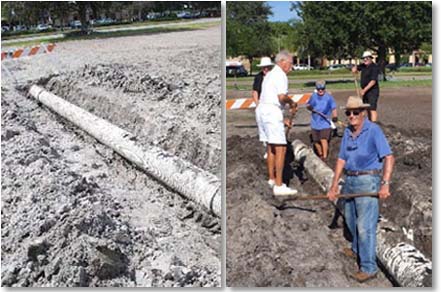
|
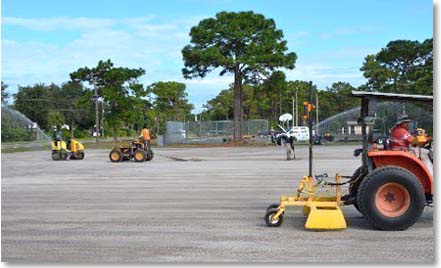
|
Grass for the new lawns was trucked in from a sod farm two hours north of Venice and meticulously unrolled in three-foot-wide strips.

|
The sod is carefully positioned on the leveled sand and moved precisely into place by landscapers with rakes.
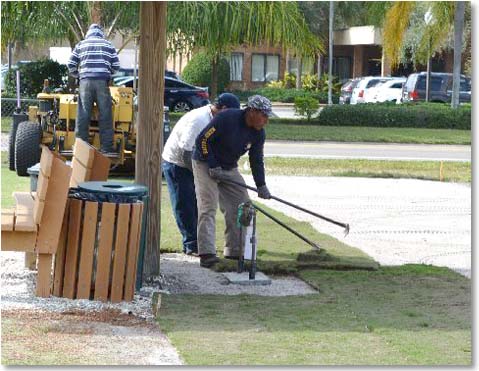
|
Members not only watched the grass grow: On one memorable occasion caught by a club photographer, they organized a complete sweep of the new lawns to remove all the weeds.
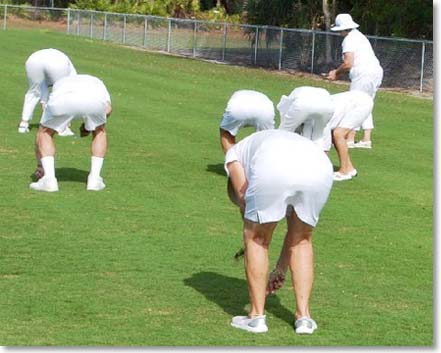
|

|
Members constructed some parts of the new deadness boards. Mark Claff made the cross-like frames for hanging them.
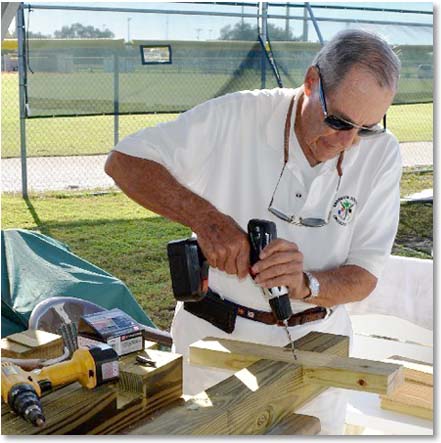
|
Nancy Hart shows off the dowels she turned into colorful sticks that allow deadness board keepers to do the job without standing.
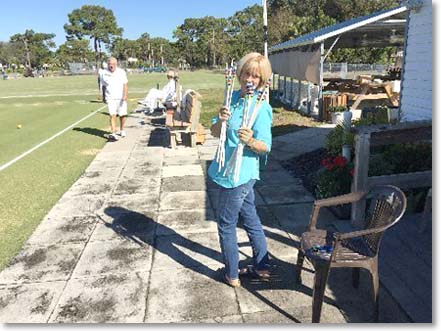
|
When you visit the Sarasota Croquet Club--and naturally, you're invited--this is what you'll see when you enter from Lucaya Street: first, three full-size courts. Strolling further down the pavements stones to the right, you'll come to the clubhouse and then the new lawns on the end, which are likely to be reduced size. The SCCC has established a local playing culture inside a very sensible policy of having higher-handicap players use, mostly, reduced-size courts. As their skill evolves, they can play more regularly on full-size courts. It is this policy, along with meticulous scheduling of events and programs to cover all levels of skill and three different games, that could allow the SCCC to become the biggest club in America.
The club's new president, Hans Peterson, now 55, learned to play croquet in the 80s on the lawns of the club that preceded the SCCC as the national model of the "public club"--San Francisco, which managed at its height to serve 100 members on only two courts.
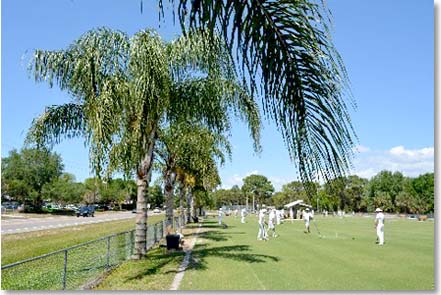
|
Just as in San Francisco, passers-by on Pinebrook Road in Sarasota--a busy north-south route in Venice--can see figures in white playing a game that doesn't hide behind country club gates and the walls and hedges of private estates. And if you stop by to ask what's going on, the members will welcome you and invite you to a free introduction to the game.
How could the Sarasota County Croquet Club fail to grow and prosper in conditions like these, with inspired leadership, enthusiastic members....and an expanded clubhouse and night lighting?
CROQUET WORLD thanks Ron Truman, editor of the Sarasota Club Newsletter; immediate past president Bob Lentz, club founders Jackie and Fred Jones, new president Hans Peterson, and a host of club photographers for help with this story.